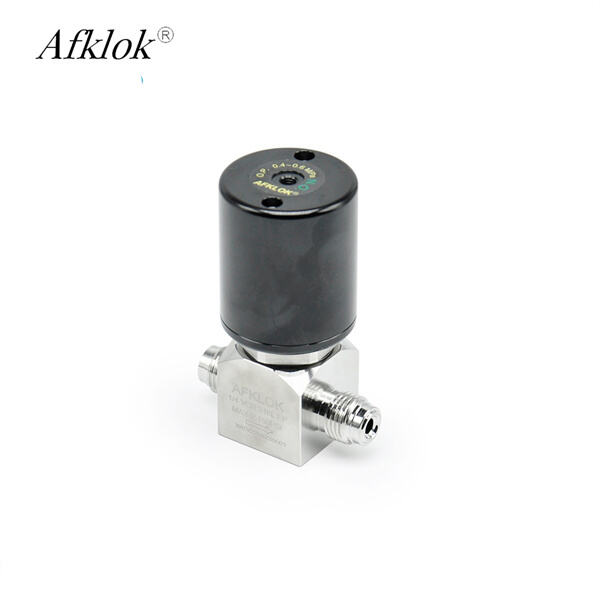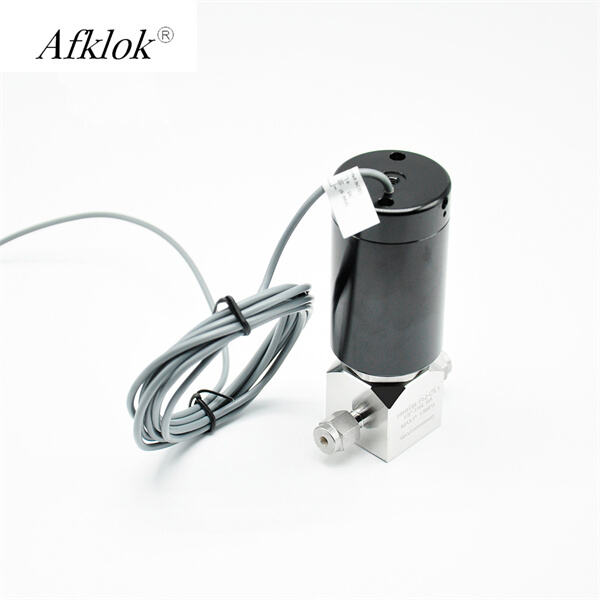A diaphragm valve pneumatic is a that control the air or gas flow in many systems. So, it is an essential role in ensuring the air or gas goes to the required place. Diaphragms function with a rubber piece that can move up and down. With the valve opens the rubber part goes up and free airflow of gas or air passes easily through. When the valve is closed, the rubber piece goes down and obstructs the air or gas, preventing it from flowing through. Such an act is quite crucial in various scenarios.
Advantages of using pneumatic valve diaphragms in industries Their reliability is one of the biggest advantages. This means they are trusted to run smoothly without shutting down. They are made to last forever, so they keep working well even after long term usage. This reliability is crucial for businesses that rely on their systems to operate without downtime.
One of the great advantages of pneumatic valve diaphragms is their very accurate control. This means they can regulate the flow of air or gas exactly as required. Large control is extremely useful in lots of the commercial tasks. This helps the systems run properly and efficiently. If everything is controlled perfectly, it gets better performance and that is useful for any business.
Also, pneumatic valve diaphragms are very easy to use. They’re relatively easy to install, and once they’re set up, they require little maintenance. So businesses won't have to invest huge amounts in repairs or replacements, so they are cheaper in the long run. This simplicity results in them being a widely used component in various industrial applications.

Components of a Pneumatic Valve Diaphragm SystemTo begin with, a pneumatic valve diaphragm system consists of a series of essential components that all play a critical role in regulating the flow of air or gas. To understand how the system works you need to know these basic parts. The key components are the actuator, valve body, diaphragm, and stem and plug.

These pneumatic valve diaphragms play an important role because many industrial systems use this to improve performance and efficiency. These valves enable better process and flow control by providing precise control of how air or gas flows. For instance, they help guarantee that machines receive the right amount of air or gas, which is needed in order for them to function properly.

In addition, the pneumatic valve diaphragms also assist in waste reduction and lower operation costs. They achieve this by capping leaks and ensuring the system operates most optimally. If systems work properly, then they can save considerable costs over time. This can make pneumatic valve diaphragms a good option for a variety of industrial applications.
Shenzhen Wofly pneumatic valve diaphragm a one-stop solution for all your gas supply needs including design consultation, to installation, production, testing and maintenance. This allows for a simplified process for customers, eliminating the hassle of working with many vendors. We are a seasoned professional with an in-depth understanding of the fluid industry. We are able to provide customized, informed solutions to satisfy the specific needs of each customer. We keep abreast of the latest developments and trends in the industry which means we are able to offer the most innovative solutions.
Shenzhen Wofly prioritizes customer satisfaction and provides responsive, pneumatic valve diaphragm throughout the complete product lifecycle. This includes consultation, design, procurement, installation, maintenance and testing and ensuring that customers get complete solutions to their gas supply needs. By focussing on satisfaction of customers, the company fosters long-term partnerships and repeat business. This not only increases their customer base, but enables them to continuously enhance their services and products in response to feedback from customers.
Shenzhen Wofly is equipped with sophisticated high-tech pipe welding tools from Swagelok, which demonstrates their commitment to the highest construction standards for gas pipeline engineering. The company continually invests in the development of pneumatic valve diaphragm in order to remain ahead of the sector. It is able to develop new products and techniques to meet the changing requirements of the market as well as advances in gas supply systems.
Shenzhen Wofly has extensive industry know-how and technical skills that allows them to pneumatic valve diaphragm and produce gas supply systems that are pneumatic valve diaphragm and associated components that meet the specific needs of various industries. The company is aware that different industries face unique issues and limitations. They can meet these challenges with customized solutions, and ensuring maximum performance.